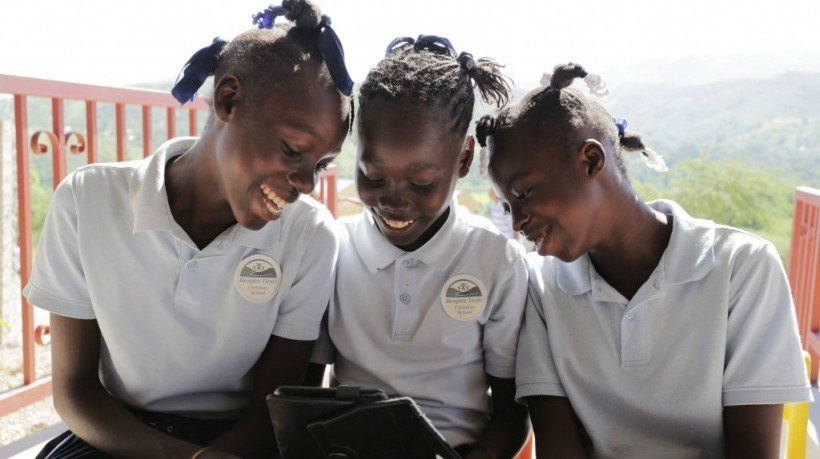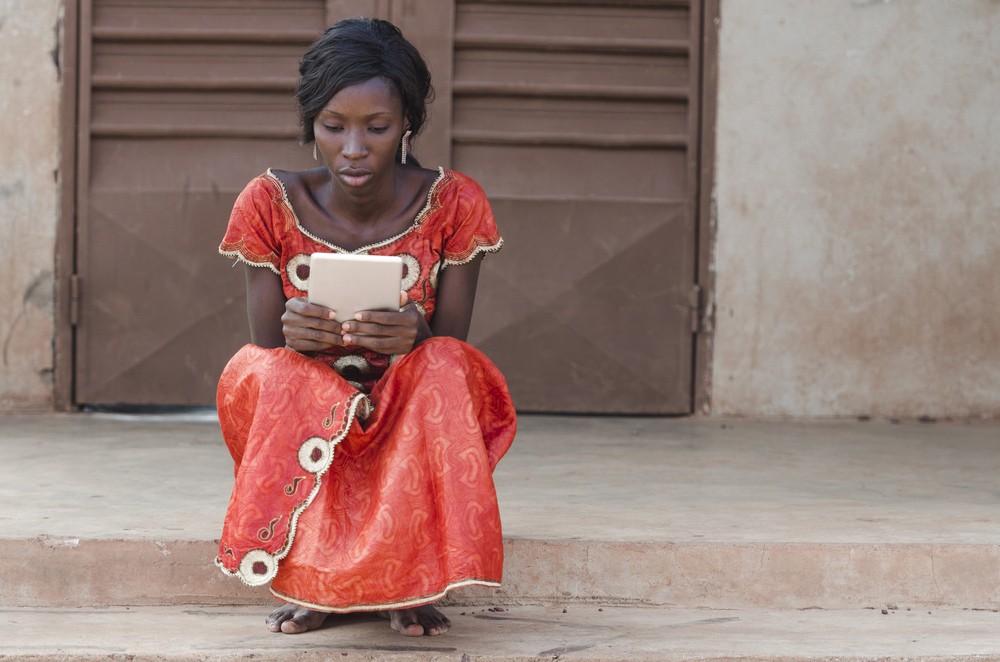eLearning In Africa: Nonstarter Or Skyrocket?
Africa's population is the fastest-growing in the world. By 2050, it is expected to double in size. Moreover, some 40% of Africans are under 15, but there is very limited government spending on education. eLearning would seem to be a magic solution to this problem and, in theory, courses should be accessible to everyone everywhere at a fraction of the cost, providing maximum flexibility. eLearning is the ideal solution to many barriers facing African students when it comes to attending university. Online courses have the potential to address some of the greater challenges the continent faces, such as poverty, violence, and extremism. However, this is not quite the picture in Sub-Saharan Africa.
Against Illiteracy Rates And For Higher Education Access
Lying south of the Sahara desert, Sub-Saharan Africa is made up of 49 of the 54 states in Africa and recent figures show that over a billion people live here. With the world's highest population growth, how is eLearning spreading in this part of the world and what are the challenges? It is a well-known fact that illiteracy rates are high in Sub-Saharan Africa but, despite this, the internet is becoming a major educational tool in these countries.
A young and ambitious population is keen to learn and adopt new technologies. Africa is a very heterogeneous continent made up of numerous countries with their individual languages, cultures, and economic opportunities. Many countries have taken advantage of blended learning and are offering online courses to students via universities and other teaching and learning institutions.
However, in general, online education rates are still very low and many students and teachers still prefer what they've always known—face-to-face teaching as opposed to cyber education. Moreover, negative perceptions about online courses abound, making it hard for online learning to take off.
Other issues to examine in more detail include:
- Internet access and connectivity;
- The availability of locally created courses;
- Issues with training and development;
- The challenges of mLearning; and
- Language barriers.
The above is not an exhaustive list but represents the major challenges to online courses in this part of Africa.
eLearning Would Have Many Benefits
eLearning is growing fast across the world and this is also true in parts of developing Africa. Today, there are many affordable distance learning solutions, and good courses and tools mean that education can take place virtually anywhere where there is an internet connection. The advance of technology has bridged geographical gaps and distance education can unite learners and make them feel like they are part of a classroom and a community.
Distance learning materials can be shared in many different formats such as video, PowerPoint presentations, word files, and PDFs. Webinars are commonplace and communicating with fellow users and teachers using chat tools and messaging is also available to online learners.
There are many different eLearning systems brought to students through the development of EdTech (education technology) and different methods for courses to be delivered. mLearning (mobile learning) is becoming an increasingly popular branch of eLearning and allows students to lean on their mobile devices (e.g., smartphones and tablets). Overall, distance learning is becoming an affordable and convenient solution, helping students to fit their studies around their daily lives.
Major Hurdles To Overcome For eLearning In Sub-Saharan Africa
The following major hurdles are currently preventing online learning from reaching its true potential in Sub-Saharan Africa.
Hurdle #1: Internet Access And Connectivity
Unless distance learning projects in African countries have reliable internet access, they're doomed to failure before they even get off the ground. According to the U.N. Broadband Commission, Sub-Saharan Africa has the highest number of countries with the world's worst internet availability (this affects 80% of countries in the region). These countries include Burundi, Ethiopia, Eritrea, Guinea, Niger, Sierra Leone, Somalia, and South Sudan. In all these places, internet penetration has reached less than 2% of the population.
At present, delivering internet access to all areas would cost too much for African governments, and rural and remote areas suffer the most. In these places, internet connections are either non-existent or very erratic. If we look at other world countries where eLearning has flourished, these benefit from huge levels of local and foreign investment, as well as above-average internet access and connectivity.
Kenya has the best connectivity in Africa and the greatest bandwidth per person. Also, speeds are fast and costs are among the lowest. Moreover, internet giants like Microsoft, Google, and IBM have Kenyan bases and have invested in online education there. Unfortunately, not all African countries are as lucky as Kenya, and this is considerably holding up the progress of eLearning across Sub-Sahara Africa as a whole.
Hurdle #2: The Availability Of Locally Created Courses
Developing content is a vital part of all online courses. However, Africa's academic institutions have not sufficiently invested in courses with local content to match national curriculums, which could then be used for online learning. Most African places of education still use U.K. or U.S. textbooks without developing their own local content and this is affecting online learning. It is a problem because Africa is such a unique continent with distinct cultures and diverse languages, reflecting the specialist needs of educating its communities. That would be the only way to minimize regional education inequality.
In countries like Swaziland, for example, proficiency in English is not widespread, particularly in rural areas. This creates sizeable difficulties for distance learning. Individual online learners face significant challenges when it comes to learning in a foreign language and idioms and colloquialisms do not help. Therefore, there is a great need for locally developed courses in Sub-Saharan Africa. To illustrate the problem, research data from Western Cape shows that 68% of students and 84% of teachers claim they can access relevant content for online courses for Sub-Saharan African countries.
However, far fewer claim they can access locally produced content with merely 56% of students and 74% of teachers claiming that they can. These figures show the real concerns around relevant locally produced content and, in order for eLearning to flourish, the issue needs to be addressed.
Hurdle #3: Issues With Training And Development
Many African teachers were educated in a climate of minimal technology, particularly if they are now middle-aged. This means they will find it hard to use modern technology to engage learners and support online courses. Education providers need to emphasize that online learning technology is not a threat to teachers' jobs. Instead, it is a tool to help them in their work.
A huge challenge is to develop and implement training and professional development for teachers in the area of online learning so they can embrace it and motivate students to take part. Partnerships with large internet companies and EdTech providers are key to building teacher skills. For example, in South Africa, Microsoft is involved in training thousands of teachers on distance learning using ICT, which will impact millions of learners.
These initiatives need to be rolled out across other parts of Africa for eLearning to successfully take off, overcoming student and teacher attitude problems.
Hurdle #4: The Challenge Of mLearning
mLearning, which stands for "mobile learning," allows learners access to learning support using their mobile devices. mLearning is well recognized as being the future of eLearning, providing learners with the opportunity to connect with others to enhance their studies (e.g., through apps). However, its penetration in most parts of Sub-Saharan Africa is still fairly limited. Also, mLearning brings the issue of designing courses that are better suited to small mobile devices (e.g., smartphones) while still providing learning that is as good as a desktop experience. Many online courses are not optimized for mobile devices.
Furthermore, these courses need modification to encompass a curriculum that is suitable for each African country's local culture. At present, there is a lack of suitable mLearning courses in Sub-Saharan Africa, a situation that is not keeping pace with smartphone ownership, which currently stands at around 33% in many African countries.
Hurdle #5: Language Barriers
The content and style of online training courses are mostly compiled in developed countries using the English language. While many Sub-Saharan African's speak English, learning would be more effective in their own language, reflecting individual social and cultural traditions. A lack of local language content is one of the major hurdles to overcome for distance education in Sub-Saharan Africa. Governments are addressing this and have called for local online course content to be developed to bridge cultural and language gaps. However, this could take some time to develop and resources are always a problem.
Conclusion
The potential for eLearning in Sub-Saharan Africa is huge. In summary, the future is looking fairly bright for distance learning in Sub-Saharan Africa, but it is not all plain sailing and there are many significant hurdles to overcome to improve access and make courses more user-friendly. This will take a concerted effort by governments, teachers, educational institutions, EdTech providers, internet giants, and, most of all, students.









